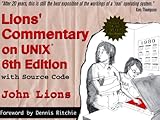https://www.amazon.com/Lions-Commentary-Unix-John/dp/1573980...
[1] https://www.amazon.com/Lions-Commentary-Unix-John/dp/1573980...
https://www.amazon.com/Lions-Commentary-Unix-John/dp/1573980...
Often, a program's layout reflected the programmer's inner thoughts as he or she worked through the creation of the code. Expressions were written like a mathematician might write, with spacing and bracketing reflecting some way of thinking about the grouping of the abstractions at hand.
This is just a random routine, written around 1975, from Niklaus Wirth's PL/0 compiler for Pascal, the programming language that he created. The indenting is wild by contemporary standards:
procedure getch;
begin if cc = ll then
begin if eof(input) then
begin write(' program incomplete'); goto 99
end;
ll := 0; cc := 0; write(cx: 5,' ');
while not eoln(input) do
begin ll := ll+1; read(ch); write(ch); line[ll]:=ch
end;
writeln; readln; ll := ll + 1; line[ll] := ' ';
end;
cc := cc+1; ch := line[cc]
end {getch};
setfs(dev)
{
register struct mount *p;
register char *n1, *n2;
for(p = &mount[0]; p < &mount[NMOUNT]; p++)
if(p->m_bufp != NULL && p->m_dev == dev) {
p = p->m_bufp->b_addr;
n1 = p->s_nfree;
n2 = p->s_ninode;
if(n1 > 100 || n2 > 100) {
prdev("bad count, dev);
p->s_nfree = 0;
p->s_ninode = 0;
}
return(p);
}
panic("no fs");
}
[1] http://pascal.hansotten.com/niklaus-wirth/pl0/
[2] John Lions, Lion's Commentary on Unix 6th Edition with Source Code. https://www.amazon.com/Lions-Commentary-Unix-John/dp/1573980...
[0] http://www.amazon.com/Lions-Commentary-Unix-John/dp/15739801...


https://www.amazon.ca/Lions-Commentary-Unix-John/dp/15739801...
this repo has many more versions of unix source:
https://github.com/dspinellis/unix-history-repo
I used the book, or tried to use it, to track down the original chroot code, for my own little container implementation for a talk:
https://www.youtube.com/watch?v=89ESCBzM-3Q